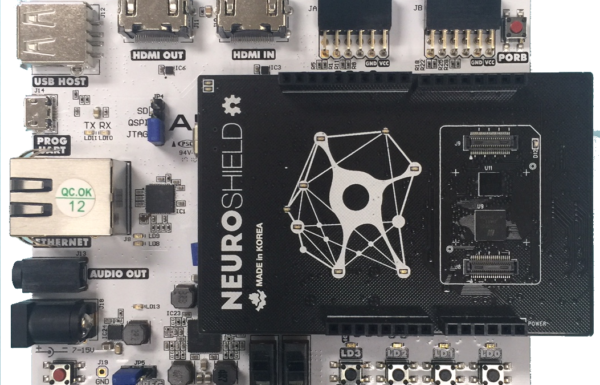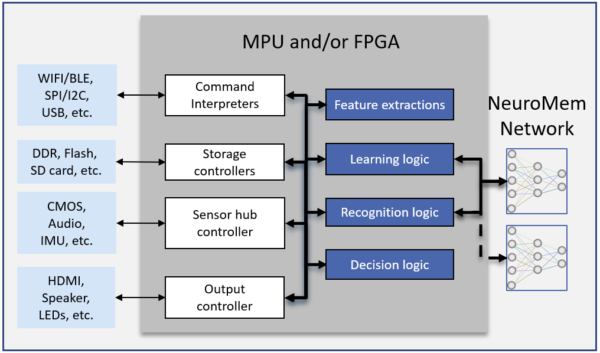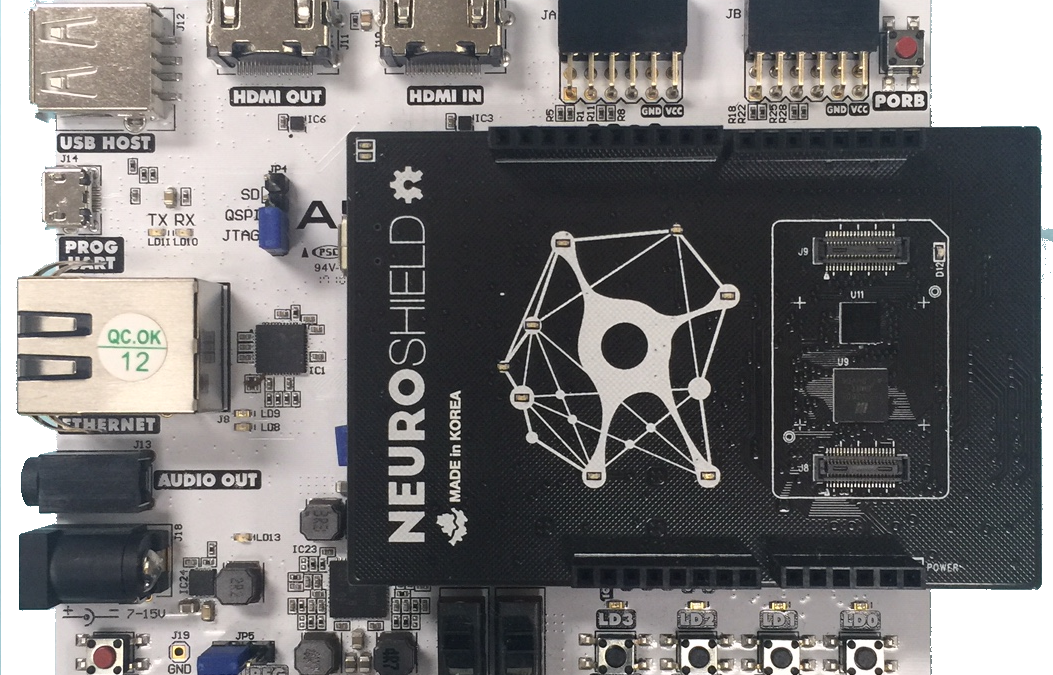Whether you are interested in video, sounds, vibrations or other sensors, you can teach NeuroMem networks with examples in real time and start immediately monitoring their response (or lack of response in the case of novelty detection)
With the new NeuroShield HDK for the ZYNQ7000 SOC, developers can easily integrate real-time pattern learning and recognition into their applications using the software programmability of an ARM®-based processor and/or the hardware programmability of an FPGA.
The pairing of the ZYNQ and NeuroShield grants the ability to surround a powerful processor with a unique digital neural network, tailored for whatever AI application is being conquered. Video, audio, vibration and other sensory inputs can be acquired, formatted, learned and immediately recognized. Decision can be taken on-board to control an actuator, transmit or store data of interest. Typical applications include detection of abnormal vibrations in an appliance, classification of outdoor noises from glass debris to bird songs, monitoring of a flame (or absence of a flame), identification of a person or object in a field of view, etc.

The NeuroShield board features a digital neural network of 576 neurons, expandable to 4032 neurons. It can learn features extracted from single or multiple sensors upon the push of a button or other external or programmatic events managed by the ARM or FPGA of the ZYNQ SOC. As soon as a learning has occurred, the neurons can be queried and depending on the application, the ARM or FPGA can retrieve a simple recognition status (Identified, Uncertain or Unknown), the category of the closest match or a detailed classification integrating the response of all firing neurons.

Unlike a conventional CNN or DL approach, the NeuroMem neurons are capable of intrinsic learning and recognition. They learn autonomously and collectively on the NeuroShield board and adapt their knowledge in real-time so new examples are taken into account at the next recognition. Learning does not require access to massive databases of annotated models and the teacher can observe the accuracy and throughput of the network after teaching a few relevant examples of each category. Note that the training can also be done offline since the NeuroShield can also be interfaced to a PC via its USB connector. In either case, the knowledge built by the neurons can be saved and ported between platforms using General Vision’s tools.
Currently supported platforms:
- Digilent Arty Z7 (switches & leds, Gige, HDMI, audio, pmods, SD card, etc)
- Avnet MiniZed (switches & leds, wifi, pmods, etc)
- HDK comes with Vivado and SDK projects and can be easily updated to support other ZYNQ7000 development boards

